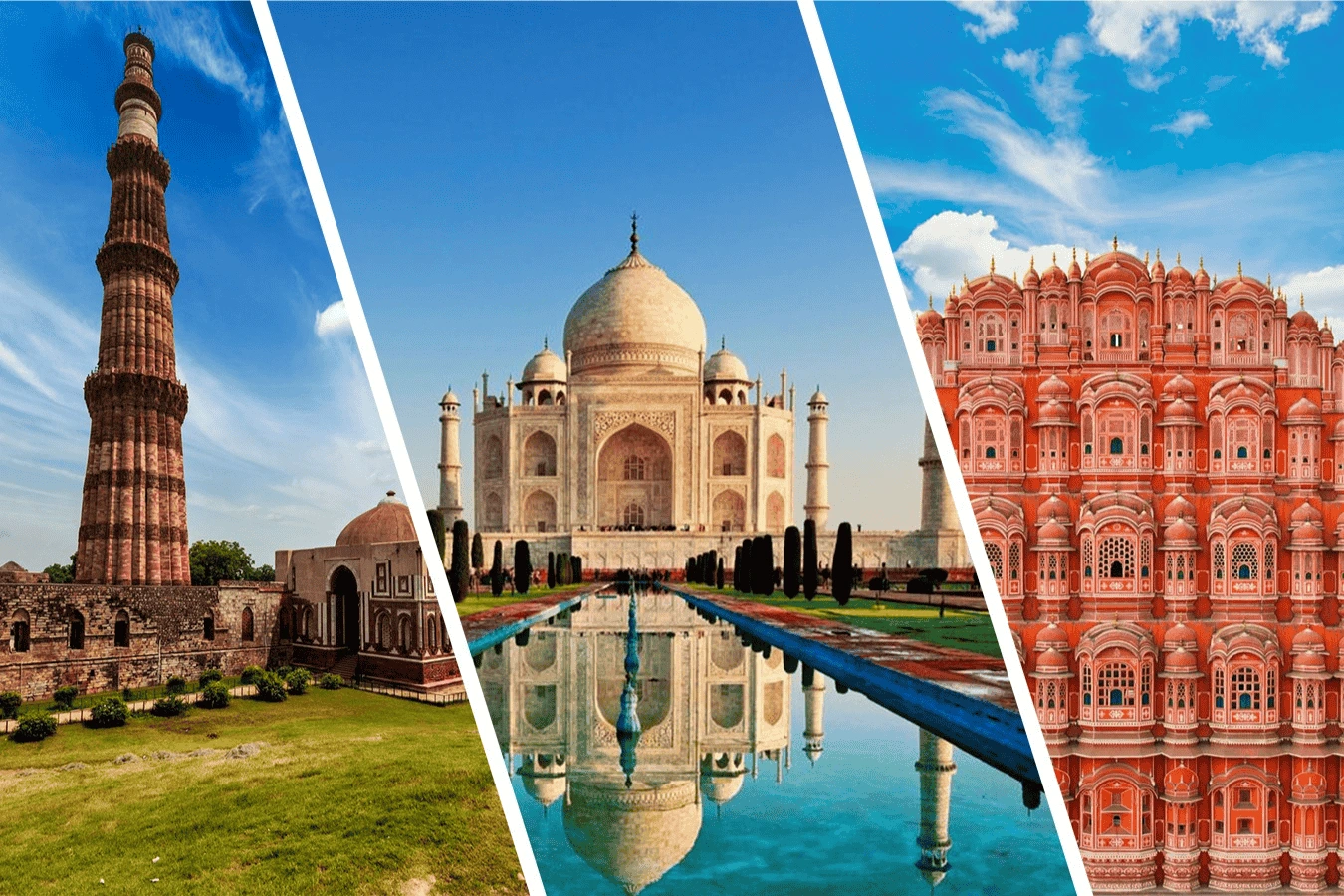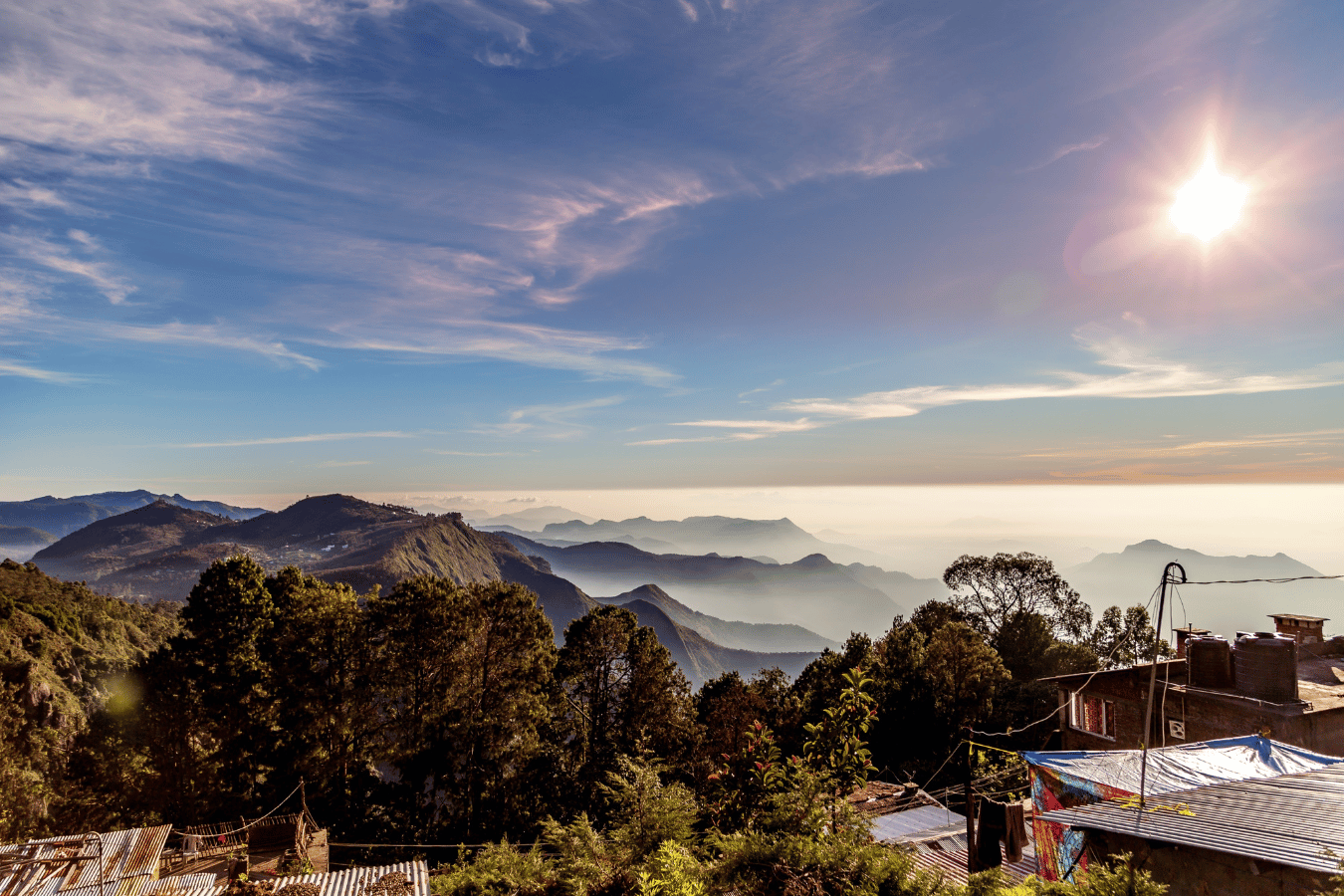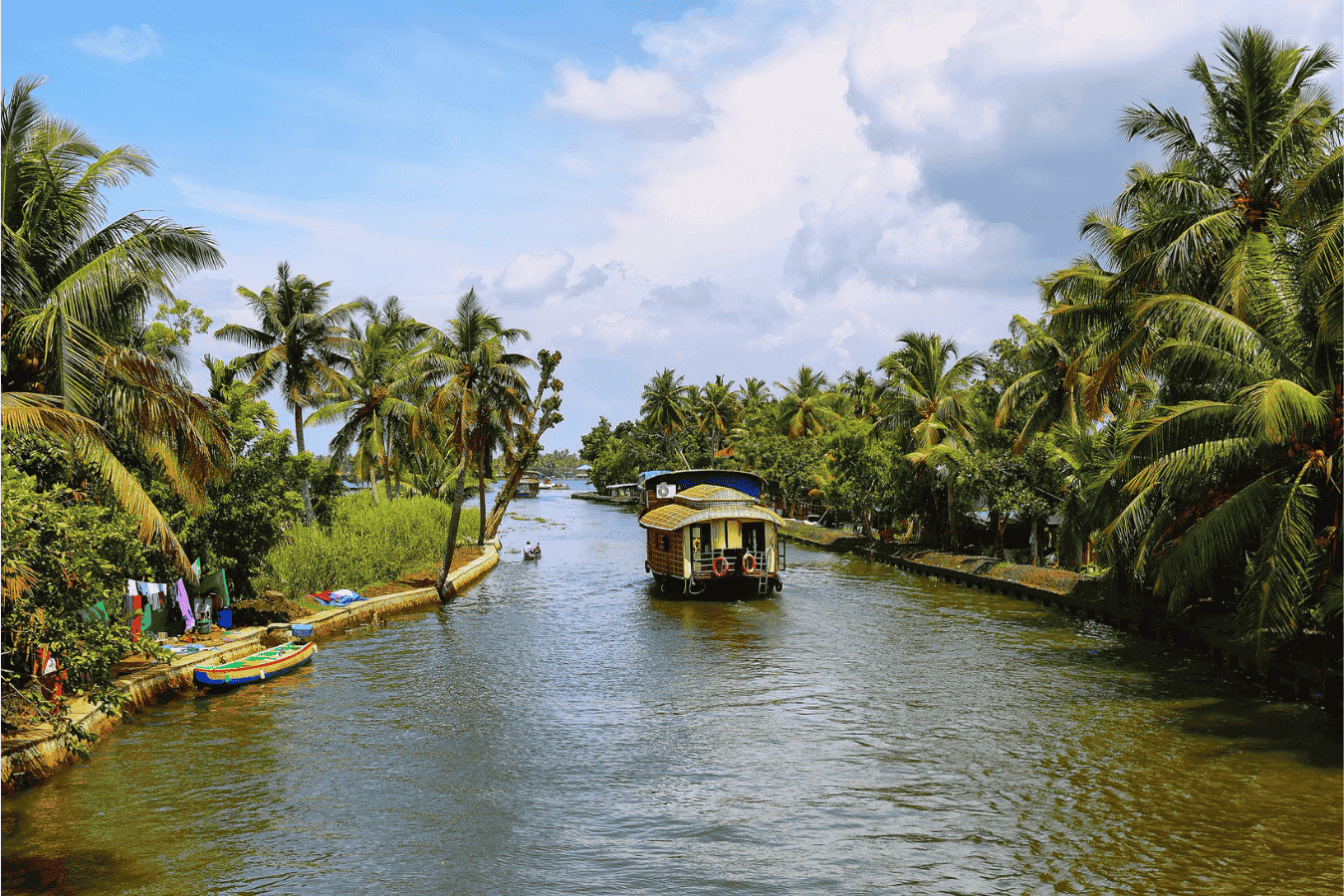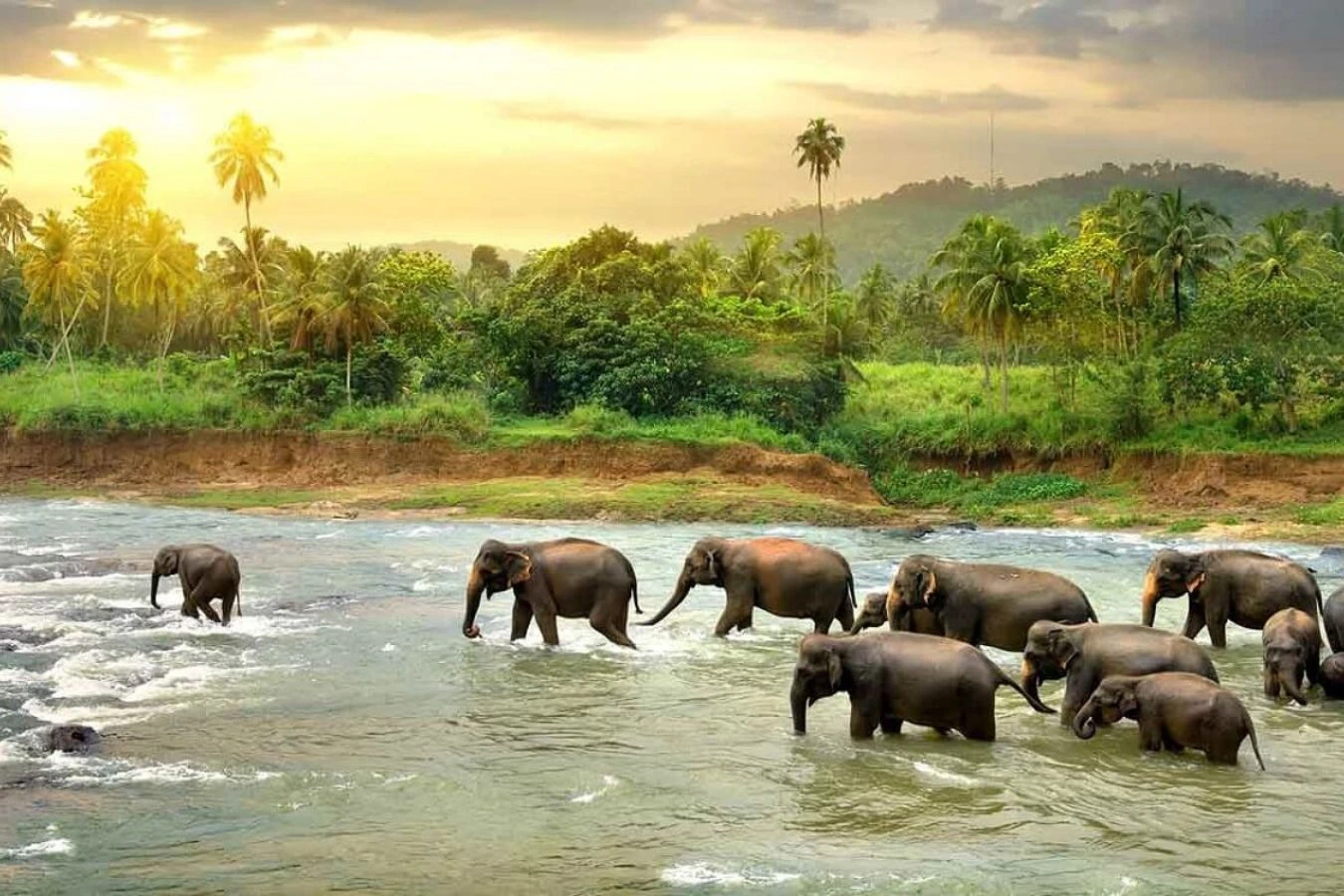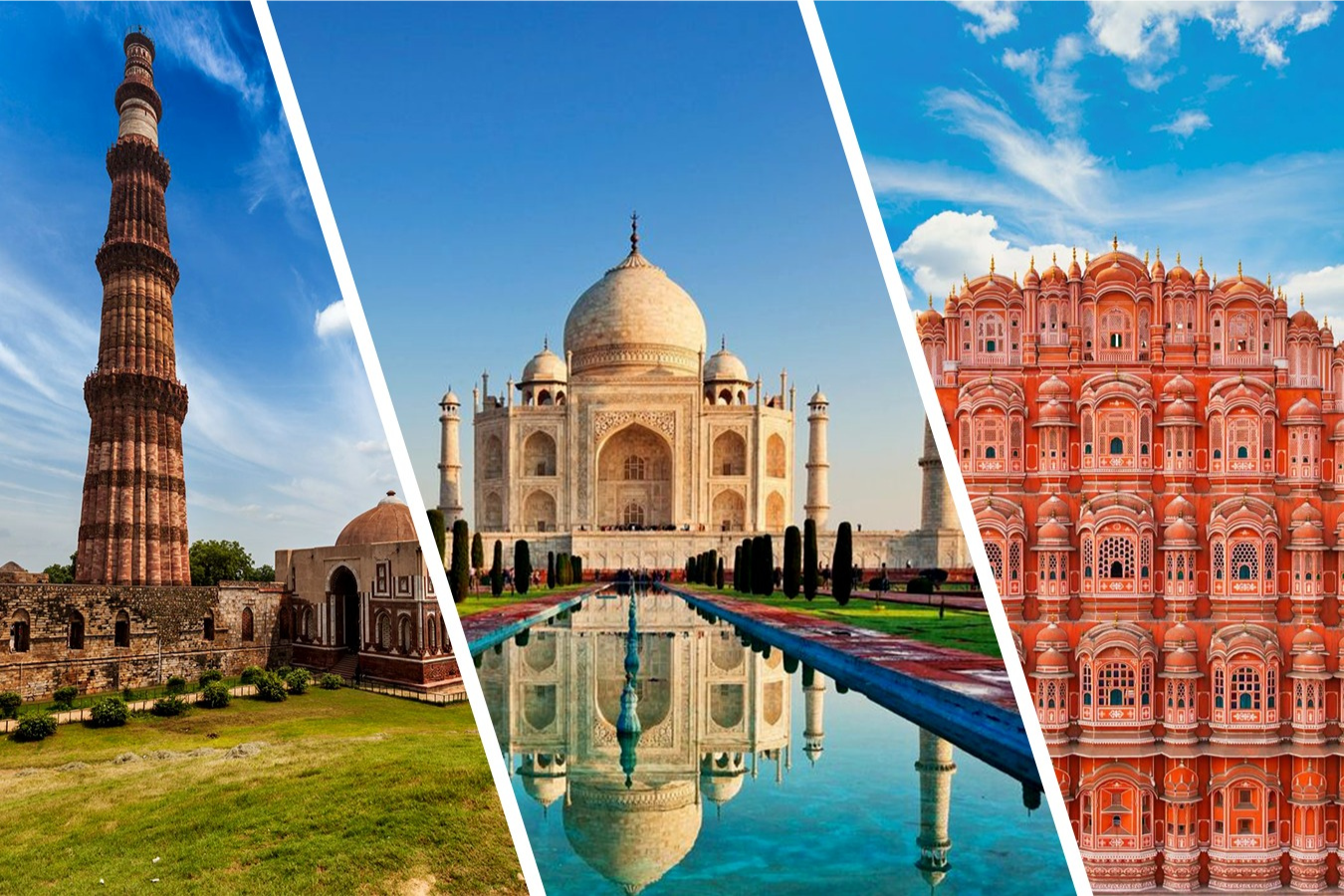
The Golden Triangle in India is one of the country’s most popular and rewarding travel routes, linking Delhi, Agra and Jaipur—three cities that capture the essence of India’s past and present. From Delhi’s lively streets to Agra’s breathtaking Taj Mahal and Jaipur’s royal palaces, this journey offers a perfect glimpse into India’s history, culture and everyday life. For travelers eager to experience the country’s beauty and diversity in a single trip, the Golden Triangle is the ideal introduction.
What is the Golden Triangle in India?
The Golden Triangle is one of India’s most popular travel routes, connecting the cities of Delhi, Agra, and Jaipur. It is called a “triangle” because these three cities form a triangle on the map, and “golden” because each city is rich in culture, history, and architecture. This route gives travelers a perfect introduction to India’s heritage and vibrant way of life.
Meaning Behind the Name “Golden Triangle”
The Golden Triangle is named for two primary reasons
- Geographical shape: The cities of Delhi, Agra and Jaipur form a roughly equilateral triangle on a map of northern India, with travel between each city typically taking 4 to 6 hours by road.
- Cultural richness: Each city offers a “golden” treasure trove of India’s rich heritage, history, and architectural marvels. The circuit is known for being a rewarding introduction to the country’s diverse culture for many travellers.
Golden Triangle Distance and Connectivity
The Golden Triangle cities of Delhi, Agra, and Jaipur are well-connected by road, rail, and air, making travel between them efficient and accessible. The total road distance of the circuit is approximately 720 to 750 km.
Distance and travel time
The travel time and distance for each leg of the Golden Triangle are as follows
- Delhi to Agra: The distance is about 233 km, taking approximately 4 hours by road via the Yamuna Expressway. Fast trains like the Gatimaan Express and Vande Bharat Express can cover this distance in 1.5 to 2 hours.
- Agra to Jaipur: The journey covers about 240 km, taking around 4 to 5 hours by road. Train travel is also an option, with a travel time of around 4 hours.
- Jaipur to Delhi: This leg of the journey is approximately 268 to 270 km, taking about 5 hours by road. Fast trains and flights are also available.
The 3 Destinations of the Golden Triangle
Delhi
As the capital of India, Delhi is the starting point for most Golden Triangle tours. It is a fusion of ancient and modern influences, with historical landmarks coexisting alongside a bustling metropolis.
Top attractions in Delhi
1. Qutb Minar
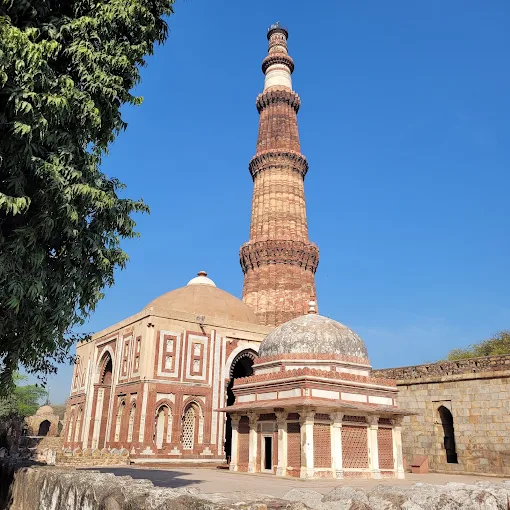
A UNESCO World Heritage Site, the Qutub Minar is one of Delhi’s most striking landmarks, admired for its towering height and rich history. Rising 73 meters above the city, this red sandstone minaret stands within the beautiful Qutub complex, surrounded by ancient ruins and lush gardens. Visitors often find the atmosphere peaceful and inspiring, especially in the early morning or evening light.
Location: Mehrauli, South Delhi
2. Red Fort
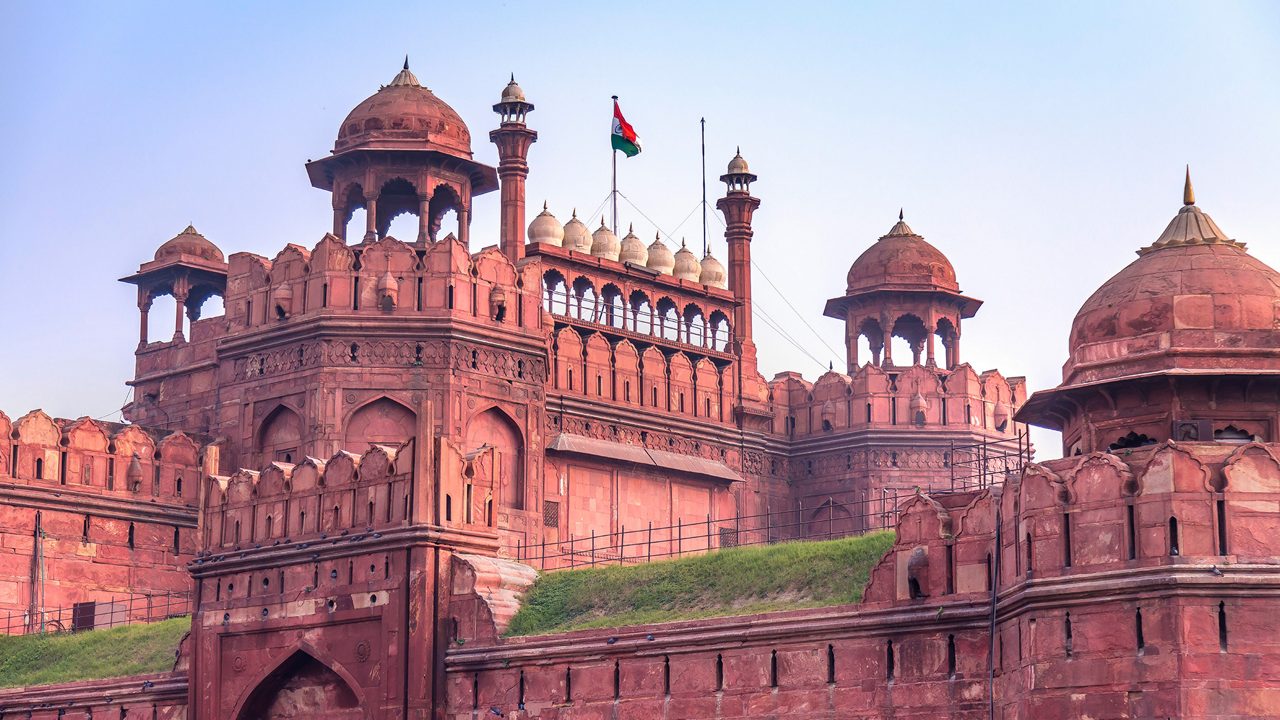
A UNESCO World Heritage Site, the majestic 17th-century Mughal fortress is renowned for its impressive red sandstone walls and evening sound-and-light show. Inside, travelers can explore beautiful halls, gardens, and museums that reveal centuries of art and architecture.
Location: Chandni Chowk, New Delhi
3. Humayun’s Tomb
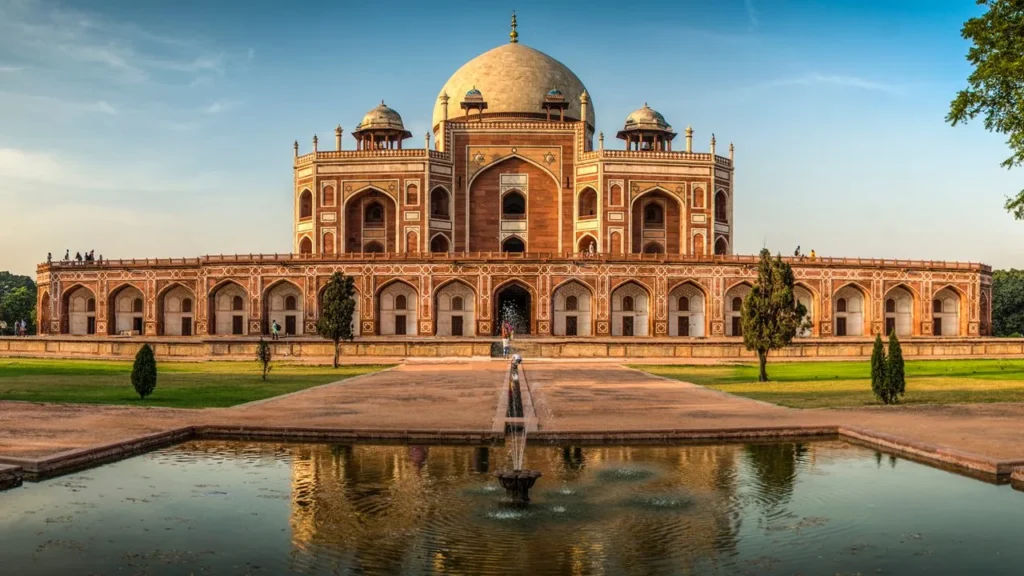
A UNESCO World Heritage Site, Humayun’s Tomb is the first garden tomb in India and a masterpiece of Mughal architecture. Built in the 16th century, its grand dome, marble pathways, and peaceful gardens later inspired the design of the Taj Mahal.
Location: Nizamuddin, New Delhi
4. India Gate
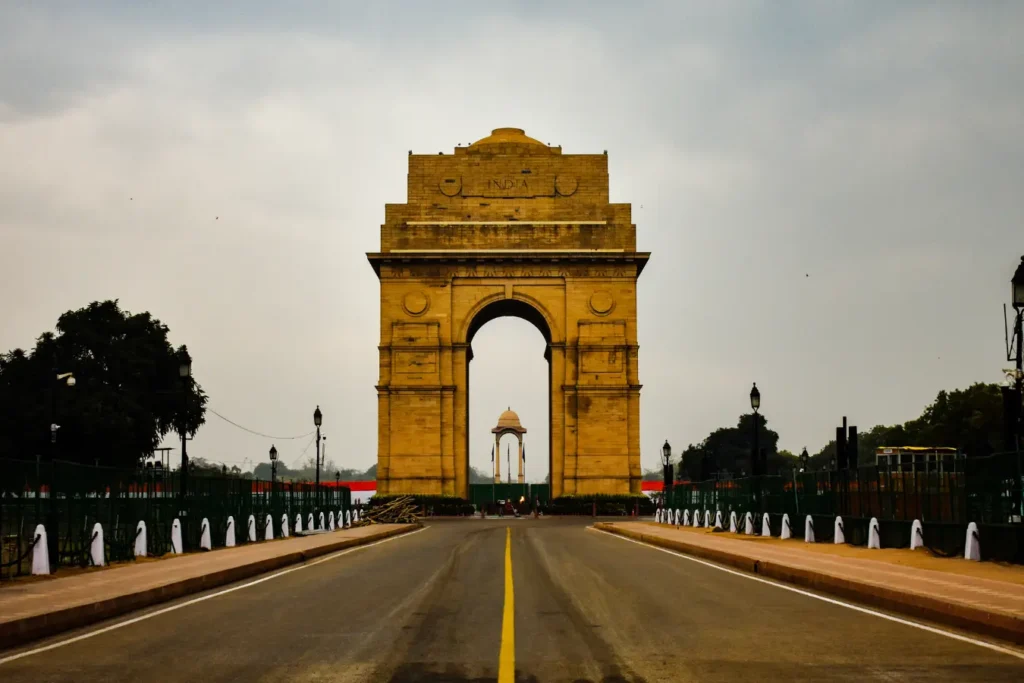
India Gate stands as a proud symbol of India’s history and unity. The monument’s grandeur, set against wide lawns and evening lights, offers a peaceful place to reflect. Many visitors enjoy relaxing here, feeling the spirit of Delhi come alive around this iconic landmark.
Location: New Delhi
5. Lotus Temple
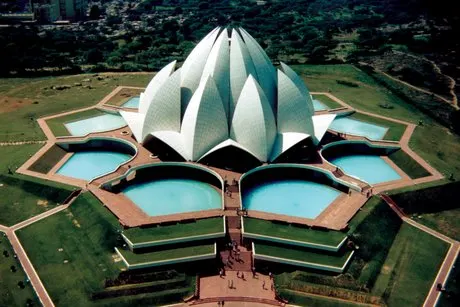
The Lotus Temple is one of Delhi’s most peaceful and inspiring places to visit. Shaped like a blooming lotus flower, this white marble temple welcomes people from all religions to sit quietly and reflect. For many travelers, it’s a calm and spiritual escape from the energy of Delhi’s busy streets.
Location: Bahapur, Kalkaji, New Delhi
AGRA
Agra is famed for the Taj Mahal, an iconic white marble mausoleum built by Mughal Emperor Shah Jahan in memory of his wife Mumtaz Mahal between 1632 and 1653. It’s renowned worldwide for its stunning symmetry, intricate inlay work, and beautiful gardens along the Yamuna River, representing the pinnacle of Mughal architecture. Here are the top attractions you should not miss when visiting Agra;
Top Attractions in aGRA
1. Taj Mahal
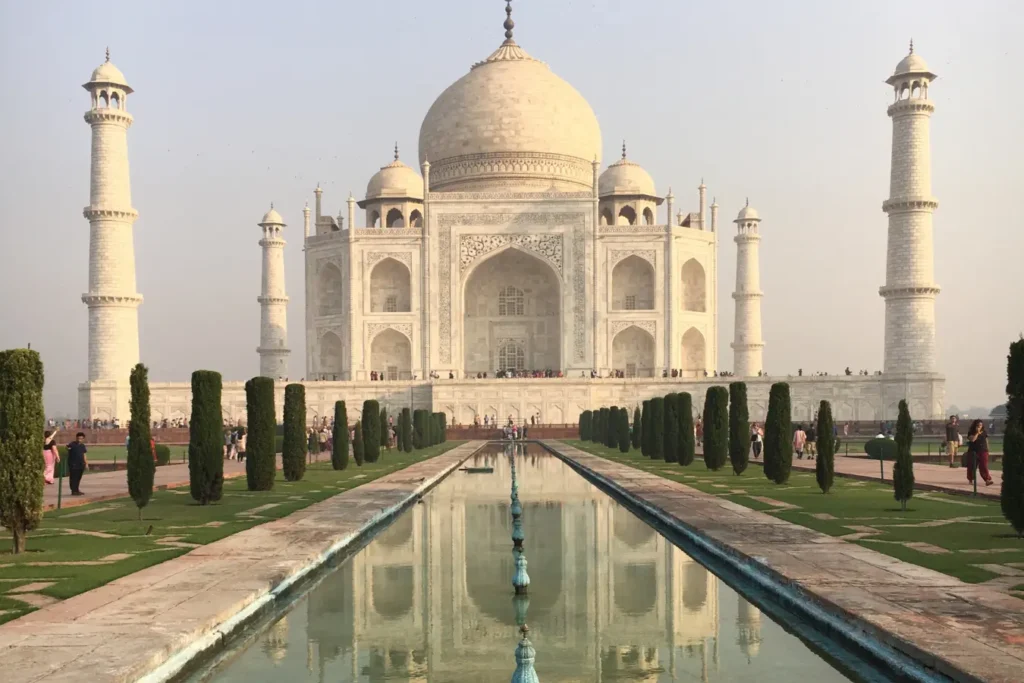
A UNESCO World Heritage Site and one of the Seven Wonders of the World, this white marble mausoleum was built by Shah Jahan for his wife Mumtaz Mahal. Known for its unmatched beauty and intricate inlay work.
Location: Agra, Uttar Pradesh
2. Agra Fort
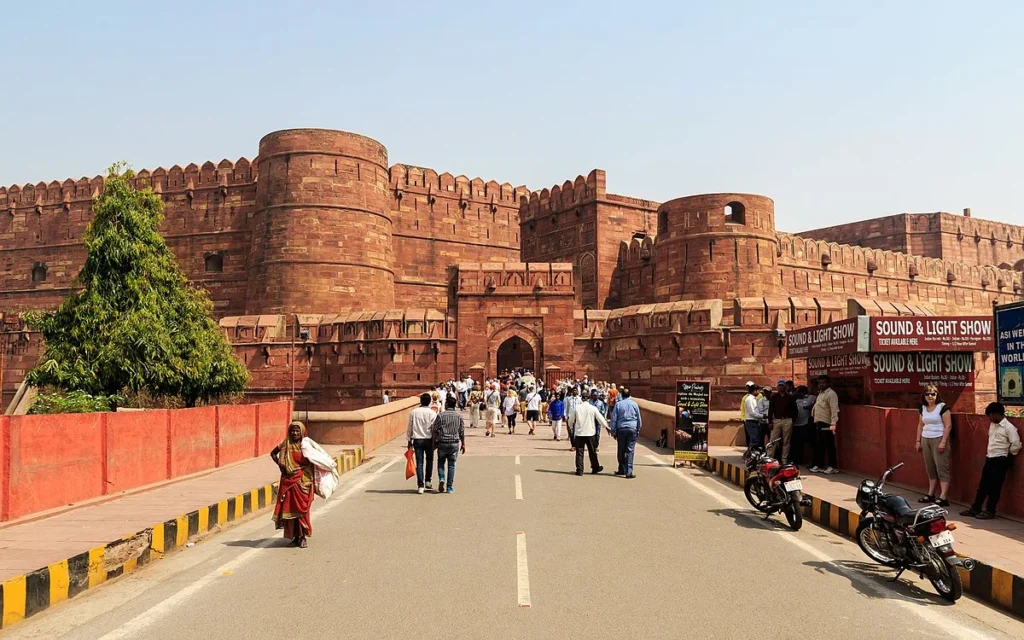
A massive red sandstone fort with palaces, halls, and mosques, also a UNESCO World Heritage Site.
Location: Rakabganj, Agra, Uttar Pradesh
3. Fatehpur Sikri Fort
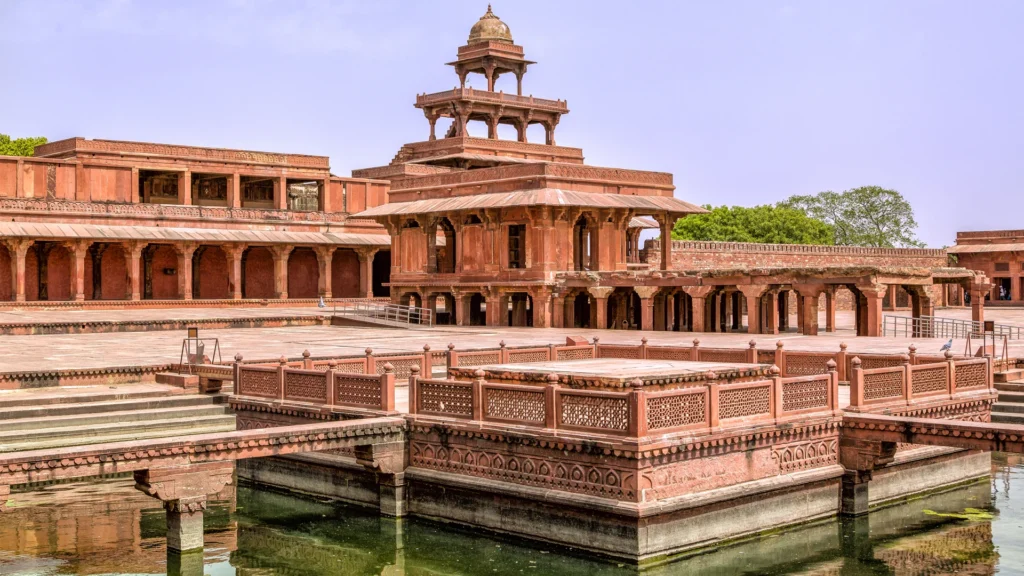
Built by Emperor Akbar in the 1570s, this fortified ancient city was the capital of the Mughal Empire for about 10 years and is a UNESCO World Heritage Site.
Location: Dadupura, Uttar Pradesh
Jaipur
Known as the Pink City, Jaipur is the capital of Rajasthan and the third stop of the Golden Triangle. Famous for its royal palaces, grand forts, and colorful streets, Jaipur offers a perfect blend of history, art, and local culture. The city’s pink-colored buildings give it a warm and inviting charm that makes every visitor feel like they’ve stepped into India’s royal past.
Top Attractions in Jaipur
1. Amber Palace
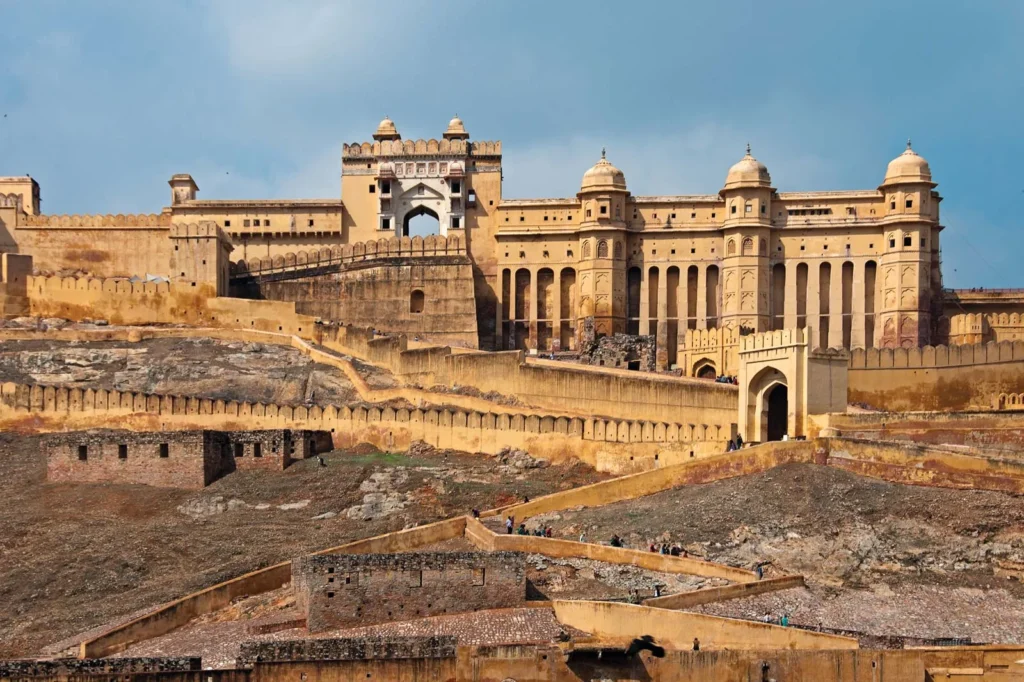
This 16th-century fortress is a UNESCO World Heritage site known for its large ramparts and artistic style. Highlights include the Sheesh Mahal (Mirror Palace), Diwan-e-Aam, and panoramic views of Maota Lake. You can also enjoy elephant rides up to the fort or a sound and light show in the evening.
Location: Devisinghpura, Amer, Jaipur
2. Hawa Mahal
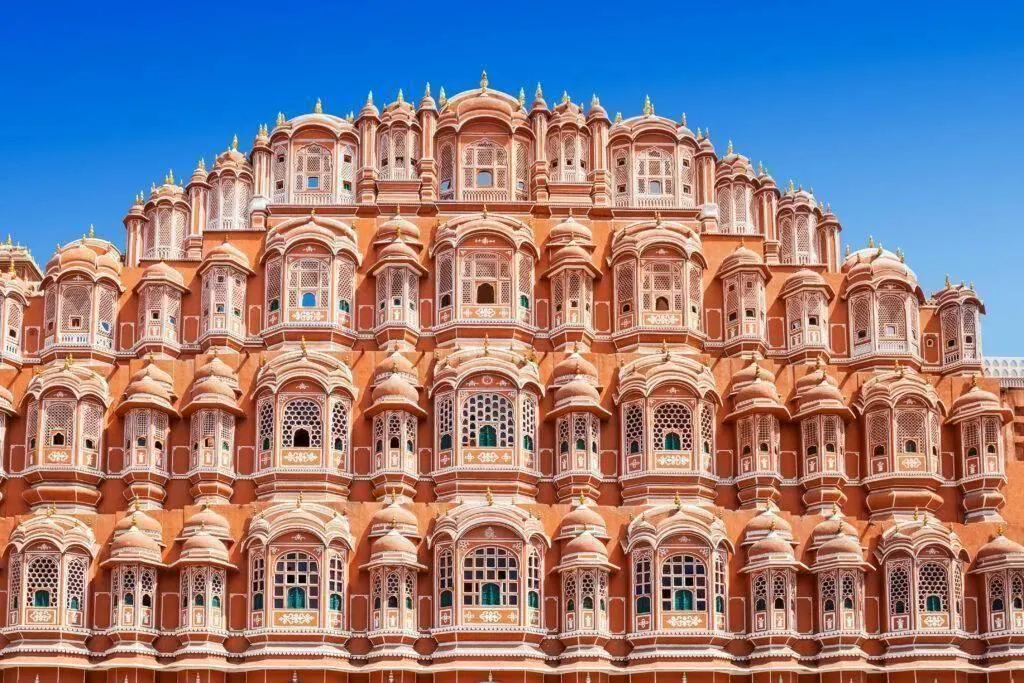
Known as the “Palace of the Winds,” this five-story palace built from red and pink sandstone is one of Jaipur’s most recognisable icons. Its unique facade features 953 intricate windows, or jharokhas, that allowed royal women to observe street festivals while remaining unseen.
Location: Badi Choupad, Jaipur
3. Nahargarh Fort
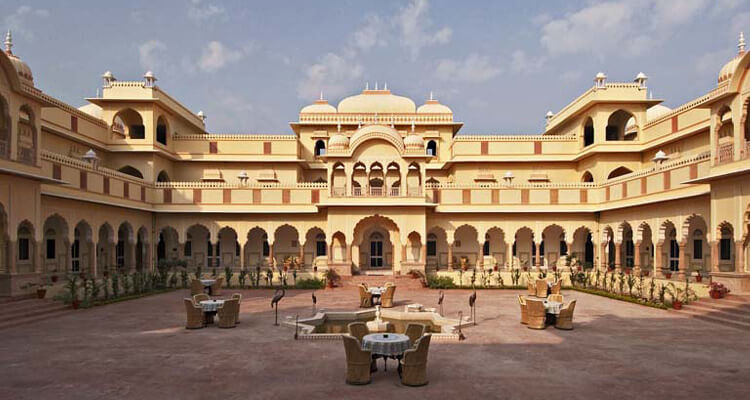
Built in 1734 on the Aravalli hills, this fort offers some of the most breathtaking panoramic views of Jaipur. It was historically used as a defensive fortification and a hunting retreat for the royal family. A wax museum and restaurants are also on-site.
Location: Brahampuri, Jaipur
4. Jantar Mantar
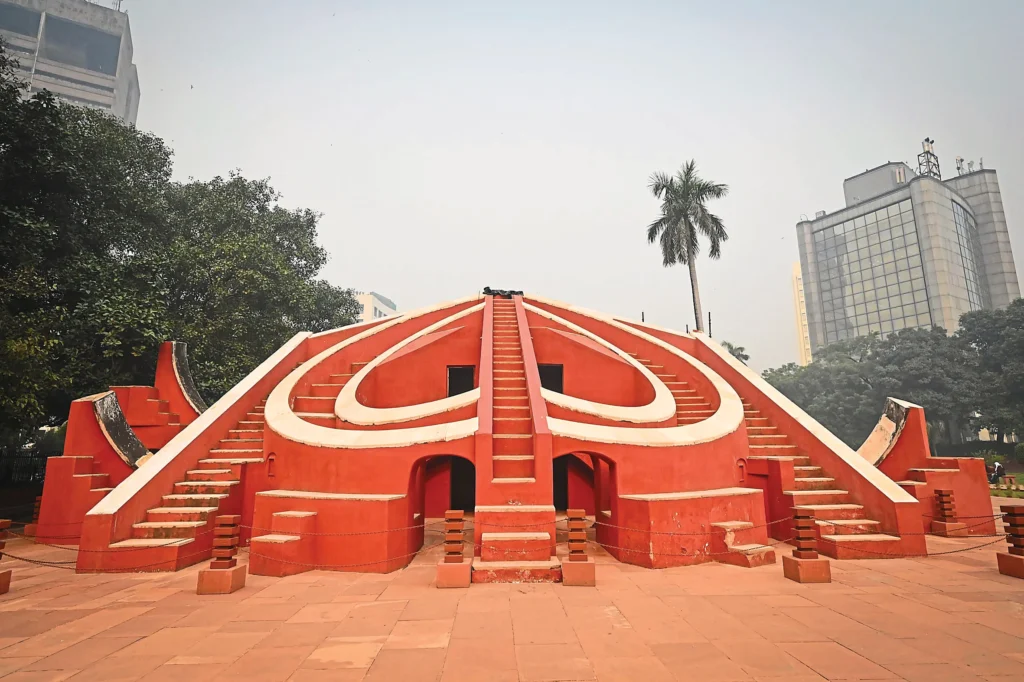
A UNESCO World Heritage site, this early 18th-century astronomical observatory features a collection of large instruments for naked-eye observation. It houses the world’s largest stone sundial, the Samrat Yantra.
Location: Pink City, Jaipur
5. Albert Hall Museum
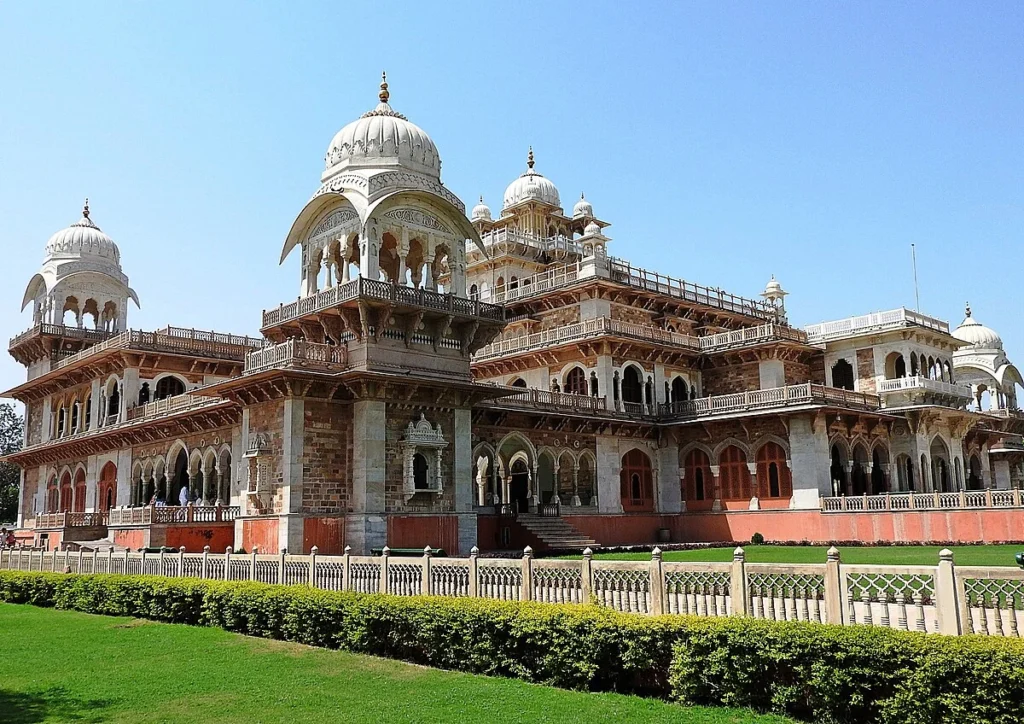
The Albert Hall Museum, Jaipur’s oldest museum, displays a rich collection of paintings, jewellery, weapons, and ancient artefacts. The building itself is a fine example of Indo-Saracenic architecture.
Location: Ashok Nagar, Jaipur
6. Jal Mahal
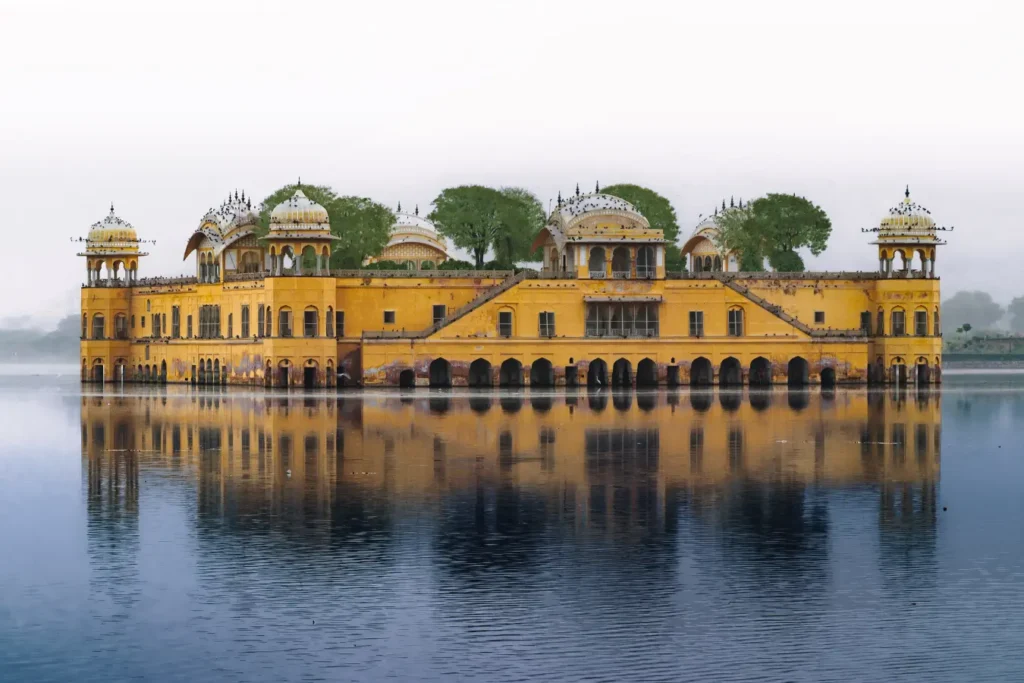
The Jal Mahal, or “Water Palace,” is a picturesque palace located in the middle of the Man Sagar Lake in Jaipur. This five-story, red-sandstone structure is a stunning example of Rajput-Mughal architecture and is especially beautiful when it’s illuminated at night.
Location: Man Sagar Lake, Jaipur
Itinerary For the Golden Triangle, India
The Golden Triangle Tour is one of the most popular travel experiences in India, offering a perfect mix of history, architecture, and local culture. The route connects Delhi, Agra, and Jaipur, forming a triangle on the map of North India.
Most travelers explore the circuit over 6 to 7 days, but if you want a deeper experience — including a wildlife safari and more relaxed pacing — you can extend it to about 10 to 11 days.
For a complete experience, you can check the detailed Golden Triangle India Tour Package by Travel Bug India, which covers all three destinations plus a memorable visit to Ranthambhore National Park for a tiger safari.
Itinerary
Day 1–2: Delhi
Arrive in Delhi, India’s bustling capital city. Spend two days exploring famous landmarks such as Qutub Minar, Humayun’s Tomb, India Gate, and Old Delhi’s Chandni Chowk. Experience the mix of ancient history and modern culture before continuing your journey.
Day 3: Delhi → Agra
Travel to Agra (about 4 hours by road). Visit the breathtaking Taj Mahal, one of the Seven Wonders of the World, and explore Agra Fort. End your day with a peaceful sunset view of the Taj from Mehtab Bagh.
Day 4–5: Agra → Ranthambhore National Park
Drive to Ranthambhore, one of India’s best-known wildlife reserves. Enjoy morning and evening jeep safaris to spot tigers, deer, and exotic birds. Stay overnight in a comfortable lodge surrounded by nature.
Day 6–8: Ranthambhore → Jaipur
Head to Jaipur, the colorful “Pink City” of Rajasthan. Explore the Amber Fort, City Palace, Hawa Mahal, and Jantar Mantar. Wander through local bazaars and shop for handicrafts, textiles, and jewelry.
Day 9–10: Jaipur → Delhi
Drive back to Delhi to complete your Golden Triangle journey. Depending on your flight schedule, you can enjoy some last-minute sightseeing or shopping before departure.
Plan Your Golden Triangle Journey
If you want a well-planned, guided experience that includes top attractions, comfortable stays, and all transfers, the Golden Triangle India Tour by Travel Bug India is an excellent choice. It’s perfect for first-time visitors who want to explore India safely and comfortably while enjoying the best of Delhi, Agra, Jaipur, and Ranthambhore.
Best Time to Visit the Golden Triangle
The best time to visit the Golden Triangle (Delhi, Agra, Jaipur) is during the winter season, from October to March. The weather is mild and pleasant, making it ideal for sightseeing, outdoor activities, and experiencing local culture.
During these months, daytime temperatures typically range from 10°C to 25°C (50°F to 77°F), with minimal rainfall and lower humidity. This period is also peak tourist season, so expect more crowds at popular attractions.
October to March – The Ideal Season
- Temperature: Between 8°C and 25°C
- Why visit: Comfortable for exploring forts, palaces, and markets without the scorching heat.
- Highlights: Perfect for heritage walks in Delhi, Taj Mahal visits in Agra, and fort tours in Jaipur.
- Festivals: Diwali, Holi, Republic Day Parade (Delhi), and Jaipur Literature Festival make this season extra special.
April to June – The Summer Season
- Temperature: Between 30°C and 45°C
- Why avoid: Hot and dry weather, especially in Agra and Jaipur.
If you travel during this time, plan sightseeing early morning or late evening and stay hydrated.
July to September – The Monsoon Season
- Temperature: Between 25°C and 35°C
- Why visit: Fewer crowds, green landscapes, and discounted hotel rates.
- Drawback: Occasional heavy rains can affect travel plans.
- Best for: Budget travellers and those who enjoy lush scenery.
The Golden Triangle tour in India is best enjoyed from October to March, when the weather is cool and comfortable. Whether you’re walking through Delhi’s historic lanes, watching the sunrise over the Taj Mahal, or exploring Jaipur’s pink-hued forts, this season offers the most enjoyable and memorable travel experience.
How to Travel the Golden Triangle
Travelling the Golden Triangle in India — connecting Delhi, Agra, and Jaipur — is easy and convenient, thanks to well-developed road, rail, and air networks. Whether you’re planning a short getaway or a detailed cultural trip, here’s how you can explore the Golden Triangle route smoothly.
By Road – The Most Popular Option
The Golden Triangle route is known for its excellent highways, making a road trip the most enjoyable and flexible option.
Distances & Key Routes:
- Delhi → Agra: ~230 km via Yamuna Expressway (4–5 hours)
- Agra → Jaipur: ~240 km via NH 21 (4–5 hours)
- Jaipur → Delhi: ~280 km via NH 48 (5–6 hours)
By Train – Comfortable and Affordable
India’s railway system offers several express trains connecting all three cities.
- Shatabdi Express and Gatimaan Express (Delhi ↔ Agra) are fast and comfortable.
- Ajmer Shatabdi Express and Rajdhani Express (Delhi ↔ Jaipur) are also great options.
Trains are ideal for travellers who prefer comfort, fixed schedules, and affordable travel between cities.
By Air – Fastest but Least Common
Although not the most popular for this route (due to short distances), flights are available between Delhi and Jaipur, and sometimes Delhi and Agra (limited services).
- Delhi → Jaipur: Around 1 hour by flight.
- Agra airport: Has limited connectivity, mainly seasonal or charter flights.
Air travel suits those on tight schedules or extending their Golden Triangle tour in India to other destinations like Varanasi, Udaipur, or Goa.
Why You Should Visit the Golden Triangle
The Golden Triangle is particularly recommended for foreign visitors as an ideal introduction to India. The circuit is manageable and provides an accessible glimpse into the country’s rich history, diverse culture, and impressive architecture. Its well-established tourist infrastructure offers a blend of convenience and authentic experiences.
1. Perfect for first-time travellers
Convenient and Accessible
The triangle, which connects Delhi, Agra, and Jaipur, is well-traveled and has excellent transport infrastructure, including reliable roads, trains, and flights. Many tour operators cater specifically to foreign tourists, providing seamless logistics and English-speaking guides.
Safety and Comfort:
As one of India’s most popular tourist routes, the Golden Triangle is relatively safe, with good tourist facilities and well-reviewed accommodations across different budgets. Many visitors opt for a private car and driver for added comfort and security.
Manageable Trip Duration
A complete tour can be done in as little as 5 to 7 days, allowing first-time visitors to experience India’s highlights without committing to a longer, more extensive itinerary.
2. A concentrated blend of history and culture
Delhi
The mix of old and new: In India’s capital, you can experience a fascinating blend of ancient history and modern city life. Explore magnificent Mughal-era architecture, navigate the bustling markets of Old Delhi, and witness the country’s contemporary urban pulse.
Agra
Mughal grandeur and timeless romance: Agra is a journey back in time to the Mughal Empire. It is home to the breathtaking Taj Mahal, one of the Seven Wonders of the World, along with the impressive Agra Fort and the abandoned city of Fatehpur Sikri.
jaipur
Regal heritage and vibrant colors: Known as the “Pink City,” Jaipur offers a glimpse into Rajasthan’s royal heritage with its majestic forts, elaborate palaces, and colorful, artistic traditions.
Tips for First-Time Travelers
Traveling through the Golden Triangle in India is an exciting experience, especially if it’s your first visit. To make your journey smooth and enjoyable, here are some practical tips to keep in mind:
Pack Smart
Carry light, comfortable clothing suitable for the season. A hat, sunscreen, and sunglasses are must-haves for sightseeing. Don’t forget a good pair of walking shoes — you’ll explore many forts, palaces, and markets on foot.
Stay Hydrated and Eat Wisely
Drink bottled or filtered water, and try local food from clean and busy places. Indian cuisine is flavorful, but start with mild dishes if you’re not used to spicy food.
Respect Local Customs
Dress modestly when visiting temples or religious sites, and always ask before taking photos of people. A small gesture of respect goes a long way in India.
Plan Travel Time
Travel between Delhi, Agra, and Jaipur usually takes 4–6 hours by car. Start early to avoid traffic and make the most of your day.
Choose Reliable Tour Operators
For a hassle-free experience, consider a guided package like the Golden Triangle India Tour by Travel Bug India. It includes transport, hotels, and sightseeing — perfect for first-time visitors.
Currency and Payments
Carry some Indian Rupees (INR) for small purchases. Most hotels, restaurants, and stores accept cards or digital payments.
Stay Connected
Buy a local SIM card or ensure your phone plan includes international roaming. Internet connectivity is generally good across major cities
Conclusion
The Golden Triangle in India isn’t just a travel route — it’s a journey through the soul of a nation. In Delhi, you feel the heartbeat of a living history; in Agra, you stand before timeless beauty at the Taj Mahal; and in Jaipur, you walk through royal palaces painted in shades of pink and gold. Together, these cities offer a glimpse into India’s past and present — a vibrant mix of colors, traditions, and warmth that stays with every traveler long after the journey ends.
For foreign visitors, the Golden Triangle is the perfect introduction to India — safe, exciting, and deeply rewarding. It’s where curiosity turns into connection, and every moment feels like a story waiting to be told.
To explore more inspiring journeys, local insights, and travel tips, visit the Travel Bug India Blog, your trusted guide to discovering India’s beauty, culture, and adventure. And if you’re ready to experience it for yourself, don’t miss the Golden Triangle India Tour Package —designed to make your first trip to India unforgettable.

